Papers by Rafael La Perna
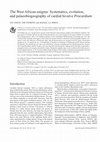
Poorten, J.J. ter and La Perna, R. 2017. The West African enigma: Systematics, evolution, and pal... more Poorten, J.J. ter and La Perna, R. 2017. The West African enigma: Systematics, evolution, and palaeobiogeography of cardiid bivalve Procardium. Acta Palaeontologica Polonica 62 (4): 729–757. Procardium gen. nov. is proposed for a group of early Miocene to Recent large cardiids in the subfamily Cardiinae. The type species is Cardium indicum, the only living representative, previously assigned to the genus Cardium. It is a mainly West African species, with a very limited occurrence in the westernmost Mediterranean. Procardium gen. nov. and Cardium differ markedly with regard to shell characters and have distinct evolutionary and biogeographic histories. Six species, in the early Miocene to Pleistocene range, and one Recent species are assigned to the new genus: Procardium magnei sp. nov., P. jansseni sp. nov., P. danubianum, P. kunstleri, P. avisanense, P. diluvianum, and P. indicum. During the Miocene, Procardium gen. nov. had a wide distribution in Europe, including the Proto-Mediterranean Sea, Western and Central Paratethys and NE Atlantic, with a maximum diversity during the Langhian and Serravallian. Its palaeobio-geographic history was strongly controlled by climate. During the Langhian stage, warm conditions allowed the genus to reach its highest latitude, ca. 54° N, in the southern North Sea Basin. With cooling, its latitudinal range gradually retreated southward, becoming mainly Mediterranean in the Pliocene–Pleistocene, and West African at present.
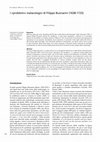
Il padre gesuita Filippo Buonanni (Roma, 1638-1725) è una figura ben nota nella storia della mala... more Il padre gesuita Filippo Buonanni (Roma, 1638-1725) è una figura ben nota nella storia della malacologia, soprattutto per la sua Ricreatione dell'Occhio e della Mente nell'osservation delle Chiocciole (1681) , della quale fu pubblicata anche la versione in Latino (1684). La Ricreatione rappresenta una delle primissime opere interamente dedicate alla malacologia, certamente la prima in Italiano . La prima parte dell'opera è dedicata alla classificazione dei testacei in «Univalvi non Turbinati», «Univalvi Turbinati» e «Bivalvi», secondo lo schema di Aristotele , alla discussione sulla loro generazione spontanea e ad altri argomenti, tra i quali «come il diletto del veder le chiocciole possa accrescersi alla mente, facendo questa passaggio a pensieri più degni» e «l'uso vario delle conchiglie». Nella seconda parte sono descritte molte conchiglie (compresi alcuni echini, lepadi e «tubuli vermiculares»), illustrate in 450 figure nella quarta parte (altre cento figure furono aggiunte nell'edizione in Latino). La terza parte è dedicata alla soluzione di 36 «problemi» riguardanti soprattutto i molluschi e le loro conchiglie. Gli argomenti spaziano dalla formazione delle perle e delle conchiglie, ai modi di vita ed anatomia dei molluschi, alla loro distribuzio-ne, ed altro. La Ricreatione è l'opera d'esordio scientifico di Buonanni. A questa seguiranno altre opere, delle quali quattro a carattere naturalistico . Come è noto, Buonanni rimase ancorato alle tradizioni aristoteliche ed alle convinzioni sulla generazione spontanea, con una visione dello studio naturalistico ancora fortemente impregnata di teologia . A proposito della Ricreatione, sottolinea come essa sia più un'opera dedicata all'esaltazione delle opere di Dio (l'opera termina con un «Laus Deo») che una vera opera scientifica. Anche la parte iconografica, che doveva rappresentare il maggior pregio dell'opera, fu valutata negativamente già dai contemporanei. Cuvier (1841), nella sua Histoire des Sciences Naturelles, dedica a Buonanni circa sette righi e, a proposito della Ricreatione, riporta questo commento: «il y a des figures de coquilles, mais qui n'approchent pas celles de Lister, car elles sont assez mal faites, et ne sont pas toujours exactes». Un recente studio (Fazzari, 2004) «riabilita» la figura scientifica di questo naturalista, che già ai suoi tempi divenne «invisibile», cioè volutamente trascurato e dimenticato. Buonanni cercò di entrare nella schiera dei naturalisti sperimentali, applicando idee moderne ed 102 Riassunto Nella sua opera più nota, Ricreatione dell'Occhio e della Mente nell'osservation' delle Chiocciole (1681), il Gesuita Filippo Buonanni discute 36 «problemi», in gran parte riguardanti i molluschi e le conchiglie. Mentre alcuni problemi e le relative soluzioni riflettono i forti convincimenti di Buonanni sulla generazione spontanea e le sue posizioni aristoteliche, alcuni argomenti, in particolar modo quelli relativi alla forma e alla funzione della conchiglia, sono affrontanti attraverso l'osservazione, con spirito critico e da un punto di vista funzionale. Nella stessa opera, ed in altre successive, il Buonanni illustrò centinaia di conchiglie, contribuendo così alla conoscenza della grande diversità dei molluschi ed allo sviluppo della malacologia.
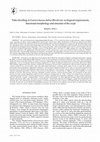
The rock boring bivalve Gastrochaena dubia (Pennant, 1777) can also live freely on soft substrata... more The rock boring bivalve Gastrochaena dubia (Pennant, 1777) can also live freely on soft substrata, within a claviform crypt consisting of a thick, coarsely agglutinated external layer and an inner lining. Examination of Pleistocene material from Monte Mario, Rome (Cerulli-Irelli collection), allows an understanding of the ecological requirements necessary for this life habit and provides new information about crypt functional morphology and construction. The crypt of G. dubia rests subhorizontally, partly buried and with the siphonal tip emerging from the substratum. A low-energy substratum, with a sandy-muddy texture rich in a coarse biogenic fraction, is the main ecological requirement. Through a process of dissolution and re-secretion, G. dubia enlarges the crypt during growth, particularly anteriorly. The agglutinated, blistered structure of the external layer seems to be formed by means of mucous "bubbles" which mineralise, incorporating sand grains and bioclasts. An elongate, thin appendage of the foot seems to be involved in this process. The same foot appendage produces thin tubules which penetrate the crypt wall. They have a probing function in the boring life-habit, but it is not known if they have any function in the free tube-dwelling habit.

three acanthocardia species, namely a. paucicostata (sowerby 1841), a. bianconiana (cocconi 1873)... more three acanthocardia species, namely a. paucicostata (sowerby 1841), a. bianconiana (cocconi 1873) and a new species herein described are particularly similar to each other, sharing some shell characters: shell relatively thin-walled, compared with the congeners, tending to be antero-posteriorly elongate, bearing a low number of radial ribs (15)(16)(17)(18). a. paucicostata is an extant species with a stratigraphic distribution ranging back to the Late Miocene at least. a. bianconiana, regarded as a variety or subspecies of a. paucicostata in the past literature, had a plio-pleistocene Mediterranean distribution. the new species, a. brunettii n.sp., the smallest acanthocardia species so far known and with an unusually elongate shape, also had a plio-pleistocene distribution. there are evidences that the paucicostata group also had representatives in the Miocene, either in the paleo-Mediterranean or the paratethys.
The species known as Nemocardium striatulum (Brocchi, 1814) is based on a misidentification. Rece... more The species known as Nemocardium striatulum (Brocchi, 1814) is based on a misidentification. Recently, a replacement name was proposed for it, Nemocardium italicum La Perna & D'Abramo, 2011, but the finding of an older valid synonym, Cardium textum Bronn, 1831, demands a nomenclatural update. The correct species' name is Nemocardium textum .
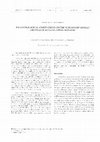
Rivista Italiana di Paleontologia e Stratigrafia, 2004
Rt{cr,ett Scptenber t6, )CC3; tLtprcd Aptìl .)C,20J1 Kq'.; orc{s: Ana grtatnn, l'liocenc, ì\ltdir... more Rt{cr,ett Scptenber t6, )CC3; tLtprcd Aptìl .)C,20J1 Kq'.; orc{s: Ana grtatnn, l'liocenc, ì\ltdircrrrnt.rn, blrs.rì nesrin:r. t.rphonorìr prhcoecoL,sv ,4rrt,1r.t. Fossìl spcc;rens refcrrccl ro the exrrn! Arltrnric-lVIcditerrrnc;rn speci* frr gzlalun politunt (\'enill& Smith, lssC). occur in Upper I'liocenc nrudstones croppinr out in nor.thcrn Iruglir (Southcrn h,tll). Attt1g,la!nn is .rn int.run.rl nl riìid litine * ithin ì cocoon nr.r.lc of b-"-ssal rhmds. sedirlent rnd nrucus. Thc exrnrincLl nr,rrcri.rl occurs ir grer cl.rver sìlt, nr.rinll nr.rssnc,:rnd in srr.rrifi.'d lclìo\ish cl.n. ev silt. T|e specinrens frorr thc grcl rlrudsrones ,rrc closed. srronglr compressc.l. deforncd rnd obliquclr or;unred. Ak, in thc rellosish nrudstoncs thc shells .rrc closcd, conrpressed .rnd mtenscLl fr,rcturcd but.rre concord:rnr ro rht beddins pl.rne:rnd conccnrr..rrcd in.r single prr enrcnr. On :r s holc. the rssoci:rted m,rcrofeunr is inclic.rLilc ol Lrppe'r slope tendirg ro ourer shcli enrironnrents. lìphononic .rnct prl.rcoccologic obstrv*ions. toqcthcr $ ith rhc ir\,:l,ribble liter,rrurc d,rt.r. sugresr rh.rr this bir.rhe lirccl ìn:r p.rrricuhr[ fluid subsrnre. Lt'epinr irs verrìcll liii.'posirion rhrnks ro thc srrbilizìng ellect of rhc bvss.rl cocoon. Since rhir specics "r' rble to cope *irh hjgh rurbiditr srrcrs..rs :uggesrcd bl rrphonomic obsenerion, ir c.rn be,rr{ued rhrr thc bvss.rl cocoon .rcted .rlso rs r iiher li,r rhe inhrhni cur rcor. Àrassrlrtr:. In sedìmenri pclitici del I,liocenc rtrnlin.rle..rifn,r.rnri nell:L pltc setrenrr;onrle deìl.r Puuli.r, rono prerenri fossrli rìfcribili .rll.r spccie .rnurlc .llantìco,nredircrr,rnee,l,rìA/../rr? tolr.,,r lvcrrìll ii Snrirh. Itlb'0).,{lrlgrLrlror è un nririlide ìnf,runaleche pnrduce un bozzolo cosriruìto dr bisso. sedinrenro e n,u(o. ill inrerno Jeì qurlc rire rnniila!o. Il m.rrcriele prorìene d.r rihs rrgiÌìosi i;isi, Lcndcnzirlnrcn re massiti c dr sìlts rrgillosi r.i.rlhstri. srr,ìriiicrri. Nell.r prìnr lirolorir igusci sono chiLrsi, iolrenrcnrc conprrssi, detor.ntri cil in posizionc c'bliqur;.rnche nci silrs girÌì.nrriìgusci sorro.r rroc cnrùs.. conrprc\si r lr,lrrurrri nt,r sono concordi .rlh str.rtiiic.rzione e con.:enrrti in rn lnLe,ù(,tt. Nel conrplesso. h m.reroi.runa associrr.r inJic.r un.r tcndcnza alla supcriicirlizzazione, drll.r sc.ìrp.ra \ùperiofc rìì.r pirrrrinr nrr esrcmr. f.c osselrrzioli trlonomichc c prlcoecoloF;cbr, iis;enìe r; pochi cl.rri di lcttcrrtura, suggcriseono chc il biraìrc vilessc in un sedi nrenro frrticohdìtnre rìuido, ìrrnrencndo l.rsserro rcrric.rle rnnirc Ì'.rzionc sr.rbilizzrnrc cìcì Lrozzolo. I cìrri r.rtonon,ìcì suggeriscono che l.r spccic'rircsse in eondiznni di clerrr:r rorbidìt.ì n.r. poichcr esso non :embr.r possecl:re .rdrrtrnrcnrì nrorfolosici uriìi per rlfront:rre t.rli condiztuni. si putl iporizz.rrc che il tozzolo si.r un tL'nrenrc di urìlc pet i.rr fronte r quesn condizione,,rgcnrlo.r n,o'di liltro pel proteugcre ilsilonr inrl.rnrc.
Rivista Italiana di Paleontologia e Stratigrafia
Abstr,rct. The revision of the genus NucinelLt \food, 1851 from the Itllian Pleistocene led to th... more Abstr,rct. The revision of the genus NucinelLt \food, 1851 from the Itllian Pleistocene led to the identificetion of tutr species, N;rcinel/a alibrandi (Conti, 1864) and N. seguenz,re (Dall, 1898). The forrner is fronr the cont;nenrîl shelf deposit of Monte Merio (Rome), the latter fronr upper slope deposits in Southern Italv (Cal;rbria and Messina).
The nuculanids Leda mendax Meneghini in Appelius, 1871, from the Plio-Pleistocene of Italy and Le... more The nuculanids Leda mendax Meneghini in Appelius, 1871, from the Plio-Pleistocene of Italy and Leda reussi Hörnes, 1865, from the Middle Miocene of Austria, are almost equilateral in shape, not rostrate, with a very shallow pallial sinus and a posterior radial swelling terminating in a rounded postero-ventral projection. Such a combination of shell characters is known only in these two species. For them, Dyolia n. gen. is proposed, with Leda mendax as type species. Relations with other nuculanids and the origin of Dyolia n. gen. are unclear. Taphonomic and morphofunctional observations on Dyolia mendax and D. reussi point to a specialization for muddy, soupy bottoms of the inner shelf, as shallow burrowers.
Lethaia, 2006
Life habit and ontogeny of the unusual arcid bivalve Ambrogia mytiloides (Brocchi, 1814) R. LA PE... more Life habit and ontogeny of the unusual arcid bivalve Ambrogia mytiloides (Brocchi, 1814) R. LA PERNA LETHAIA La Perna, R. 2006 09 12: Life habit and ontogeny of the unusual arcid bivalve Ambrogia mytiloides (Brocchi, 1814). Lethaia , Vol. 39, pp. 245 Á252. Oslo. ISSN 0024-1164.
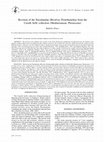
Bollettino della Società Paleontologica Italiana, 2007
The present work completes the revision of the Early Pleistocene (Calabrian) protobranchs from th... more The present work completes the revision of the Early Pleistocene (Calabrian) protobranchs from the shallow water deposits of Monte Mario and surrounding localities (Rome), present in the Cerulli Irelli collection. Additional material, mostly from the Bellardi & Sacco collection, was also studied in order to clarify the taxonomic status of some poorly known species described in the early literature. Three nuculanid genera are dealt with : Saccella Woodring, 1925, Lembulus Risso, 1826, and Jupiteria Bellardi, 1875. The Plio-Pleistocene species of Saccella have been often confused as a single, notably variable species, usually reported as Nuculana fragilis and S. calatabianensis were present in the Early Pleistocene. Other Plio-Pleistocene species of Saccella are expected, basing on literature data and on available material. Lembulus included a single Plio-Pleistocene and extant species, L. pella (Linné, 1758). Jupiteria occurred in the Plio-Pleistocene with a single shallow water species, J. fissistriata (Foresti, 1897 ex Meneghini ms), but two other deep-water species are known: J. concava (Bronn, 1831) and J. gibba (Seguenza, 1877). These genera show a general southward shift in distribution through the Miocene-Pleistocene, which led Saccella and Lembulus to disappear from the North Sea and Jupiteria from the Mediterranean and adjacent Atlantic. RIASSUNTO -[Revisione dei Nuculanidae (Bivalvia: Protobranchia) della collezione Cerulli Irelli (Mediterraneo, Pleistocene)] -Col presente lavoro viene completata la revisione dei protobranchi del Pleistocene inferiore (Calabriano) provenienti dai depositi di piattaforma dell'area di Monte Mario e località limitrofe (Roma), presenti nella collezione Cerulli Irelli (Museo di Paleontologia dell'Università di Roma "La Sapienza"). Allo scopo di chiarire lo status tassonomico di specie poco note descritte nella letteratura più antica, è stato studiato anche altro materiale, in prevalenza appartenente alla collezione Bellardi & Sacco. In questo lavoro sono trattati tre generi della famiglia Nuculanidae: Saccella Woodring, 1925, Lembulus Risso, 1826 e Jupiteria Bellardi, 1875. Le specie pliopleistoceniche di Saccella sono state spesso confuse in un'unica specie molto variabile, generalmente riportata come Nuculana fragilis (Chemnitz, 1784) o N. commutata (Philippi, 1844). Nel Plio-Pleistocene mediterraneo erano presenti quattro specie del genere Saccella: e S. calatabianensis erano presenti nel Pleistocene inferiore. Ci sono comunque evidenze o sospetti della presenza di altre specie del genere Saccella nel Plio-Pleistocene, sulla base dei dati di letteratura e del materiale disponibile. Il genere Lembulus comprende un'unica specie plio-pleistocenica ed attuale: L. pella (Linné, 1758). Jupiteria era presente nel Plio-Pleistocene con una sola specie a distribuzione superficiale, J. fissistriata (Foresti, 1897 ex Meneghini ms), ma sono note altre due specie a distribuzione profonda: J. concava (Bronn, 1831) e J. gibba (Seguenza, 1877). La distribuzione geografica di questi tre generi ha subito un generale spostamento verso sud nel corso del Miocene-Pleistocene: ciò ha portato alla scomparsa di Saccella e Lembulus da alte latitudini (Mare del Nord) e di Jupiteria dal Mediterraneo e dall'adiacente Atlantico.
Bollettino Malacologico, 2003
Veliger, 2008
In 1897, Philippe Dautzenberg and Henry Fischer described six deep water protobranchs from the No... more In 1897, Philippe Dautzenberg and Henry Fischer described six deep water protobranchs from the North Atlantic (Princesse-Alice expeditions, 1894, 1896)
Bollettino Malacologico, 2004

Zootaxa, 2005
Nucinella boucheti n. sp. is described from a 1610-1580 m deep station in the Philippines (Musors... more Nucinella boucheti n. sp. is described from a 1610-1580 m deep station in the Philippines (Musorstom 2 Expedition). Nucinellids are typically small, mostly not exceeding 5 mm, but the present species is 25 mm large, being by far the largest nucinellid so far known. The adaptive meaning of this case of gigantism remains open to speculation, but it may be an expression of a rapid diversification of the Holocene nucinellids. Nucinella boucheti n. sp. has numerous, thin and delicate subumbonal teeth, displaying a number of unusual shapes and contrasting with the few, rather coarse and stout teeth of the other nucinellids. This feature is believed to be due to allometric constraints related to the large size. With N. boucheti, 19 living species of nucinellids are known, 14 of which belonging to the genus Nucinella. The Central West Pacific, from Japan to South Australia, is the area with the maximum diversity of nucinellids (11 species).

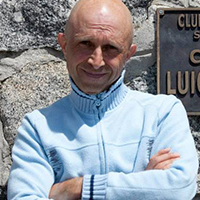

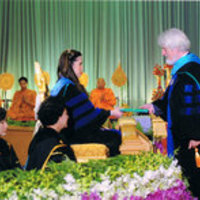

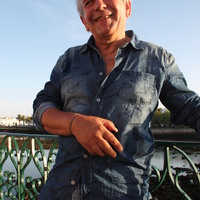


Uploads
Papers by Rafael La Perna